Genre: RPG Developer: Team Andromeda Publisher: Sega Ent. Players: 1 Released: 1998
Panzer Dragoon Saga (PDS) is the undisputable swan song of the Sega Saturn, a system already known for its abundance of RPGs at the time of the game’s release on April 30, 1998. Unsurprisingly, after the failure of the Sega Saturn to gain market traction due to numerous blunders of previous years by SEGA during the mid-to-late ’90s, the game launched to very little fanfare. This is all the more tragic since PDS itself suffered a troubled development process at Sega’s in-house Team Andromeda, during which one of the developers sadly took his life (though reportedly NOT because of the stress of the game’s development), while another died in a motorcycle accident. Team Andromeda was already known for the two hit rail-shooters in the Panzer Dragoon series for the Saturn, but they clearly took the series, and the Sega Saturn system as a whole, to new heights with PDS. Today, the game is known more for its exorbitant price tag, extremely low print run, and rumored loss of source code preventing a re-release by SEGA. This has vaulted PDS to the status of one of the holy grails of classic video games.
It is not often that an expensive game is also an extremely good, well-developed game. The likes of Stadium Events, Pal Joey, or the Nintendo World Championship ‘90 gold cart are little more than novelties to the video game historian. Panzer Dragoon Saga on the other hand, is arguably one of the best RPGs of all-time. 1 Corinthians 13:11 states “When I was a child, I used to talk as a child, think as a child, reason as a child; When I became a man, I put aside childish things.” As such, these days I’m of the opinion that the vast majority of video games are not worth the increased price that has come with the past decade, and probably not worth playing at all when comparing your time to other more worthwhile pursuits. (like writing a review that few will read?) But in the new high-speed Internet age that has brought with it a glut of cheap, consumable media, if any game were to make the case for being worth $1000 used, it is PDS.
I had the privilege of playing an authentic copy of PDS on real hardware around 2013 after borrowing it from a friend. The game, whose plot is driven by a plethora of pre-rendered 3D full motion video (FMV) in that classic late ‘90s style, is only about nine hours long. Director Yukio Futatsugi’s vision for PDS shares much more in common with the auteur video game-maker Hideo Kojima than your average RPG and gives PDS a sort of film quality that we know today is what makes a video-game long lasting. An engrossing plot, built on top of a world crafted in the same style as Lord of the Rings, Star Wars, Harry Potter, or the Chronicles of Narnia.
The game starts you off in the role of Edge, a mercenary hired by the government to protect an archaeological dig site filled with relics from the Age of the Ancients, the term for the gods who created the planet you are on. During your time guardian this backwater site, you discover a mysterious girl encased in rock. After fighting off a mysterious creature, Craymen and his band Black Fleet mercenaries show up to raid the dig site and kidnap the girl. You can’t fight them off, but you are rescued by a mysterious flying dragon. And, just like the first two games in the Panzer Dragoon series, you mount this dragon and are off to rescue the girl and take revenge on Crayman’s band of rebels. Or so you think?
One of the main draws of PDS, even if you have no familiarity with the lore and plot of the first two games in the series, is the atmosphere into which the player is instantly thrown. The world of PDS is a post-apocalyptic world covered in vast swaths of deserts, filled with horrible monsters, an oppressive government with extremely powerful weapons, and a mystical lore that details how the “ancients” that created the world you are inhabiting are of a technological nature, using supercharged towers to implement their intelligent design. Laid on top of that backdrop is the age-old tale of human beings fighting to impress their ideology on the world. It is perhaps a tale whose nuance and importance are lost in an age of moral relativism, but PDS goes to all lengths to make its own story far more compelling than any video game plot is supposed to be. You will visit near-abandoned towns and caravans, fight giant warships, and view grotesque creatures as you ultimately grapple with the questions of the reason for your own existence, why the ancients created the world, what human beings role in the world is, and much more. It is nice to see an RPG that is not weighed down by stereotypical plot points and character design that was used in many RPGs of the late ‘90s. According to James Milek’s article in Polygon, “Panzer Dragoon Saga: An Oral History,” the dev team for PDS shied away from crafting perfect anime-style heroes who are out to save the world and always succeed without much afterthought. The intent of the game’s development team to make things unique and tight-knit lends itself to a more personal story, and a more engrossing experience for the player that will leave you searching the internet for more official lore of the Panzer Dragoon world.
The gameplay is a unique hybrid of turn-based RPG combat and the real-time rail-shooter gameplay that the Panzer Dragoon series is known for. A gauge fills that allows you to either reposition your dragon in one of four directions either towards or away from the enemy or attack using a variety of moves that you continually learn as the game progresses. It’s a fun and unique system that feels deeper than just mashing the A-button, waiting for the next prompt. You have to think about whether you should position yourself in or out of the direction of the enemy or attack them head-on, depending on how good your speed is, which reflects how quickly your gauge refills. It is what immediately drew me to PDS. As a gamer who is not otherwise drawn to the average slog-fest RPGs of the ’90s that have you fighting the same monsters in the same environments over and over again just to watch a few numbers go up on the screen, to see a cut scene that is probably utterly irrelevant to the plot as a whole. There are some random encounters, but the game scarcely needs any grinding for progression. Instead, the text and FMV-heavy style of PDS pushes the plot and the gameplay so well that you won’t find yourself bored and waiting for the next trigger event to occur. There is also a significant exploration dimension that is reminiscent of the game Tomb Raider. You will travel through deserts, dark caverns, forests, and even an abandoned warship to find a vast number of secrets buried in text-heavy books and diaries of the past inhabitants of this land that you, as the player, now travel. This manages to blend together nicely the story of the game as you fight bigger, badder enemies and yet struggle to determine who exactly the enemy is in this post-apocalyptic world.
The game is not perfect. For one, there is a lot of FMV that may look dated by today’s video game standards, though I view this as part of PDS’s charm. The game is also only roughly nine hours long, despite being on four separate discs. As a person who enjoys short and sweet games that are not 40-hour-long slogfests, I view this as a highlight of the PDS experience. But some longtime RPG fans may find it too short relative to its outrageous price-tag on the used market. And the graphics, though they push the Sega Saturn’s hardware to its full limit, are awfully jagged and clunky compared to what SEGA would accomplish with the Dreamcast just a year and a half later with the release of Shenmue. In a market where graphics ruled supreme, you can see why PDS did not make an impression on the technical gurus and market insiders at the time. But I don’t find that the graphics detracts from the gameplay. Rather, it enhances the feel of the barren wasteland that you inhabit in the Panzer Dragoon world. And then there is of course, the price tag itself and lack of a re-release on any modern platform, rumored to be due to a loss of the source code for the game. This leaves you only with a few option of how to play: Purchase an original copy, purchase an illegal reproduction on a modded Sega Saturn, or illegally emulate it on something like MEDNAFEN or Retroarch. With an initial remake of Panzer Dragoon released and Zwei supposedly in the works, one can only hope that PDS will get a fresh coat of paint and an HD Remaster as well. It sorely deserves it.
Overall, it’s hard to truly describe the experience that is PDS without spoiling the plot. And many of the game’s issues are due to the limited technology of 1998 that Team Andromeda had to work with, combined with the fact that we are utterly spoiled by plenty of cheap new releases of games that are easily played on HD televisions. But, if you choose to traverse a way to play this game in the best way possible, provided you don’t go overboard like Zach Hines for engadget did, you will not be disappointed. In the meantime, I’ll leave you to decide on how to play this masterpiece lost to the ages.
SCORE: 9 out of 10

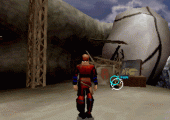
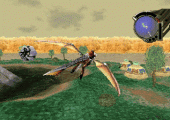
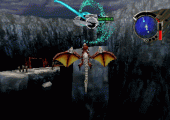
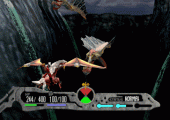
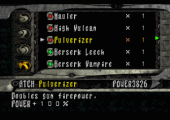
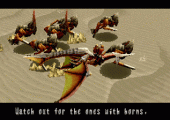
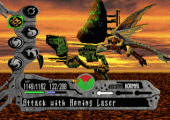
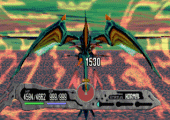
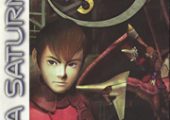
Recent Comments